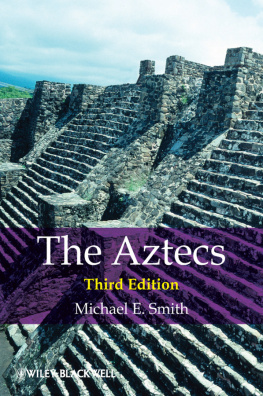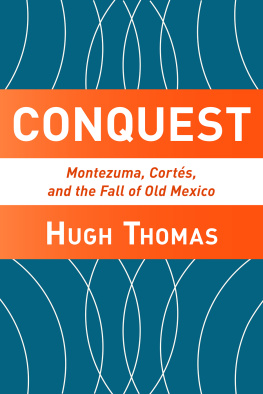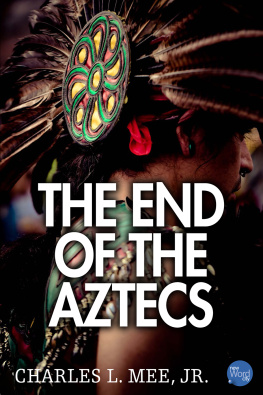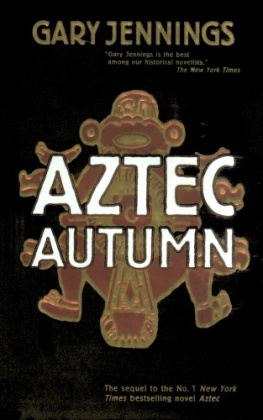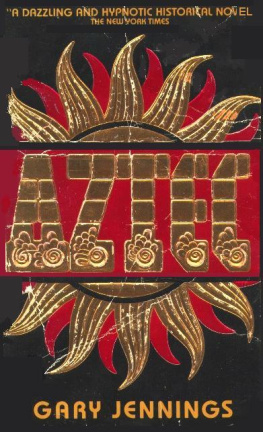Irwin R. Blacker - Cortés and the Aztec Conquest
Here you can read online Irwin R. Blacker - Cortés and the Aztec Conquest full text of the book (entire story) in english for free. Download pdf and epub, get meaning, cover and reviews about this ebook. year: 2015, publisher: New Word City, genre: Adventure. Description of the work, (preface) as well as reviews are available. Best literature library LitArk.com created for fans of good reading and offers a wide selection of genres:
Romance novel
Science fiction
Adventure
Detective
Science
History
Home and family
Prose
Art
Politics
Computer
Non-fiction
Religion
Business
Children
Humor
Choose a favorite category and find really read worthwhile books. Enjoy immersion in the world of imagination, feel the emotions of the characters or learn something new for yourself, make an fascinating discovery.

- Book:Cortés and the Aztec Conquest
- Author:
- Publisher:New Word City
- Genre:
- Year:2015
- Rating:3 / 5
- Favourites:Add to favourites
- Your mark:
- 60
- 1
- 2
- 3
- 4
- 5
Cortés and the Aztec Conquest: summary, description and annotation
We offer to read an annotation, description, summary or preface (depends on what the author of the book "Cortés and the Aztec Conquest" wrote himself). If you haven't found the necessary information about the book — write in the comments, we will try to find it.
Cortés and the Aztec Conquest — read online for free the complete book (whole text) full work
Below is the text of the book, divided by pages. System saving the place of the last page read, allows you to conveniently read the book "Cortés and the Aztec Conquest" online for free, without having to search again every time where you left off. Put a bookmark, and you can go to the page where you finished reading at any time.
Font size:
Interval:
Bookmark:
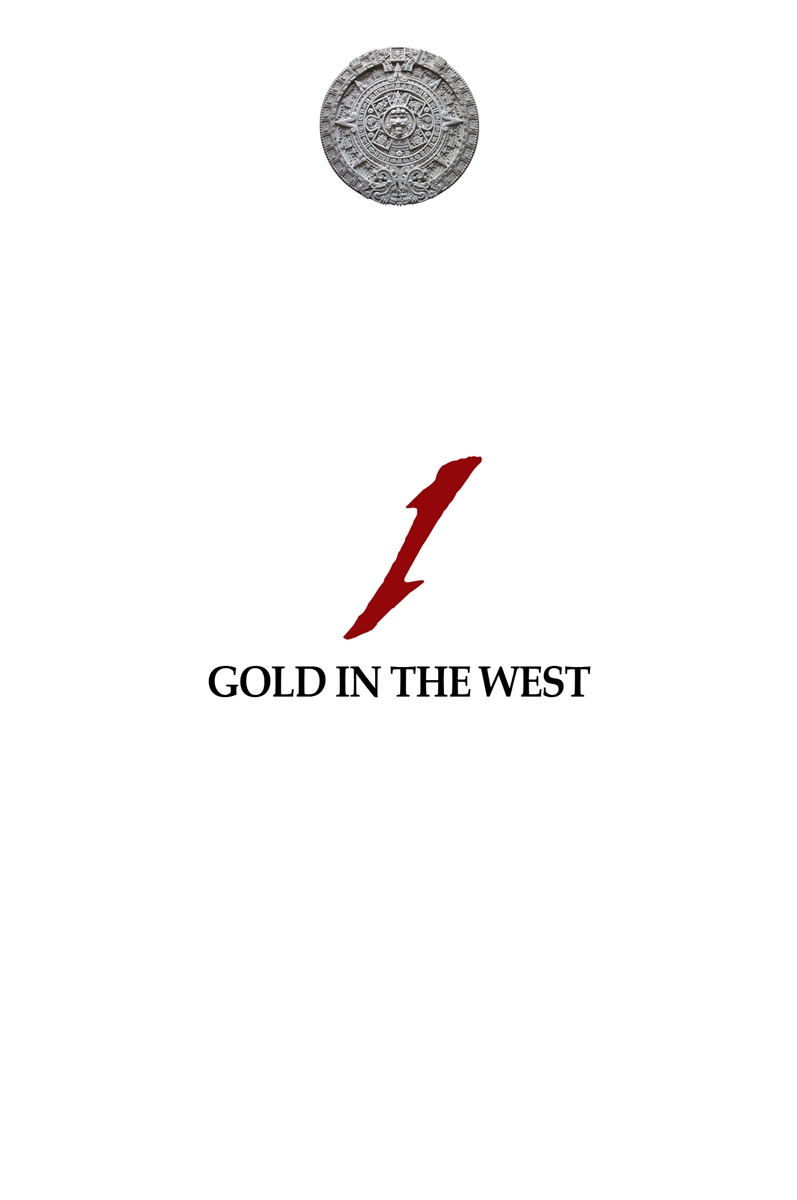
On February 8, 1517, 110 Spanish adventurers in three ships put to sea from a small port on the north coast of Cuba. A breeze rose from the east, and their pilot - Antonio Alaminos, who had sailed with Christopher Columbus - pointed the prows toward the setting sun. Although the adventurers had heard that land lay to the west, none of them knew the winds in the area, the currents, or the depth of the water. They sailed on, however, until suddenly they were caught up in a raging storm. For two days and two nights, huge waves battered the three ships. Then the skies cleared, and they continued westward.
Twenty-one days after they left Cuba, they sighted a headland in the distance (Cape Catoche in modern-day Mexico), and on a rise beyond the coast, they could make out a great city. In two unrewarding decades of colonizing the New World and searching for the fabled riches of the Indies, no Spaniard had ever seen a larger or more promising objective.
The two smaller vessels moved boldly toward the shore and were met by ten Indian canoes. In one of the canoes was a native chieftain, a cacique, who beckoned the Spaniards to come ashore. Led by their captain, Francisco de Crdoba, twenty-five men formed ranks on the beach and prepared to march inland. They had proceeded only a short distance toward the city when they were suddenly ambushed by Indians hidden in the brush. The first volley of Indian arrows wounded fifteen Spaniards, and then the two forces closed with each other. The Spanish soldiers, with their heavy plate armor and steel swords, grappled with the natives, who wore only heavy cotton padding and wielded lances.
The unequal battle was over almost as quickly as it started. The Indians fled the field, leaving fifteen of their dead behind. Crdoba and his men moved forward eagerly. From where they stood, they could see a small open square and three houses built of masonry. As evidence of an advanced native culture, these intriguing buildings - the first masonry structures found in the New World - excited the Spaniards to hope that they were on the threshold of even greater treasures.
With combined curiosity and avarice, Crdoba and his companions entered the houses. Here they found pottery idols, some with the faces of demons and some with the faces of women. They also found a wooden chest with tiny gold and copper ornaments. Convinced even by this small find that they had made an important discovery, they returned to their ships and continued exploring along the coast toward the setting sun.
What they had unknowingly discovered was the Maya civilization of the peninsula of Yucatn. By accident, Crdoba and his men had stumbled upon a people who have been called the Greeks of the Western Hemisphere.
Before the birth of Christ, the Maya civilization was taking form in what is now Guatemala, in highland and lowland regions to the south and west of the Yucatn city that Crdoba had sighted. According to the vague historical picture that archaeological research is now slowly providing, Maya civilization reached the culmination of its development in the six centuries between A.D. 300 and 900 and then began to decline. At their height, the Maya were in many ways the most civilized people in the Americas. They had a calendar more precise than any known in Europe until more than a half-century after Crdobas voyage. The massive stone and concrete buildings they constructed for their numerous ceremonial centers displayed an impressive architectural skill. They engineered aqueducts and roads that still exist, and there is also archaeological evidence that the Maya succeeded in building stone bridges, reservoirs, and elaborate underground passages.
By a strange accident of history, the gold-hungry Spaniards happened to strike the New World in one of its richest cultural sites. The Yucatn peninsula and the mainland areas behind it (in present-day Mexico, Guatemala, and Honduras) made up the homeland of the ancient Maya whose magnificent civilization flourished for six centuries before A.D. 1000. Throughout this vast, lush area are the ruined pyramids and palaces of a vanished culture. The Spaniards discovered some of these monuments; others continue to be found in the twenty-first century. Maya society was based on a religion of many gods - some fierce and insatiable - and was ruled by priests and nobles. But why the lofty temples of the Maya were often deliberately destroyed and why their great religious centers were abandoned are questions that may never be answered. Cop n, where a massive, snaggle-toothed stone was discovered among over-growing trees, was one of the Maya centers that was abandoned after the classic period ( A.D. 300-900). Perhaps the most rewarding Maya site for modern tourists is Chich n Itz in Yucatn. Like Cop n, it was apparently abandoned but then re-occupied and overrun by a breed of bloodthirsty invaders from central Mexico. Encouraged by a glimpse of the heights reached by this Indian culture, the Spanish explorers hoped to find an even mightier civilization that had not yet declined, where a river of gold still flowed into the city.
The Maya were extraordinary artists in stone and wood sculpture and in painting. They were the only people in the New World to have an effective system of writing, a by-product of their consuming interest in mathematics and astronomy - sciences in which they excelled. They were also among the few people anywhere in the world at that time whose food supply was so abundant that they had an opportunity to develop their civilization more fully.
Late in their history, around the beginning of the eleventh century, the Maya lost much of the vigor and discipline that had regulated their former growth, and Yucatn was occupied by dissident and warring groups. It was one of these remaining tribes that Crdoba and his men had discovered on that fateful day in 1517.
After their first conflict with the Maya Indians, Crdobas force sailed down the west coast of Yucatn for fifteen days until they saw another large town near a great bay. Here they dropped anchor and went ashore to fill their water casks. They were again attacked by the Maya, and this encounter proved to be even bloodier. The surrounded Spaniards received no quarter; from the beginning, the battle went against Crdoba. And then, more Maya warriors joined the conflict, violently swinging their flint-edged wooden swords. As the battle raged, Crdoba was wounded ten times. Soon, fifty of the Spaniards were dead, and those who still lived were wounded and weary. With their last efforts, the adventurers broke out of the circle of natives, and fighting shoulder-to-shoulder, they struggled back toward the beach where their boats were waiting. The natives continued to press them, and as Crdoba and his men reached the water, arrows showered over them. The Indians waded into the surf after them even as the smallest of the ships drew in close to shore, and the Spaniards clambered aboard. At last the sails were raised, and the ships put to sea.
Afterward, Crdoba and his companions realized that the battle, for all of its fury, had lasted but an hour. Slowly the adventurers looked about and counted their dead - they had lost no more than fifty men. But in the next few days, they cast five additional companions, dead from wounds and thirst, into the sea. The natives called the place where they fought Champotn, but the pilots marked it on their charts as the Coast of the Disastrous Battle.
The men dressed their wounds and cursed the pilot Alaminos because once more he had taken them to a well-populated and stoutly-defended part of the peninsula of Yucatn. And because there were no longer enough able seamen remaining to handle the ships, they brought the vessels together off the coast, stripped the smallest, and burned its hull. Then they divided the able-bodied sailors into two crews for the remaining ships and went in search of fresh water. After a few days, they paused at one salty creek, but finding nothing to drink, they sailed on. Rather than return to Cuba by the route they had come, Alaminos suggested they sail northward and home by way of Florida, where he knew they could find fresh water.
Font size:
Interval:
Bookmark:
Similar books «Cortés and the Aztec Conquest»
Look at similar books to Cortés and the Aztec Conquest. We have selected literature similar in name and meaning in the hope of providing readers with more options to find new, interesting, not yet read works.
Discussion, reviews of the book Cortés and the Aztec Conquest and just readers' own opinions. Leave your comments, write what you think about the work, its meaning or the main characters. Specify what exactly you liked and what you didn't like, and why you think so.


